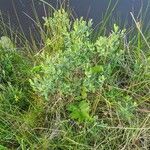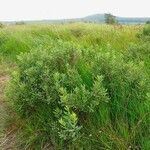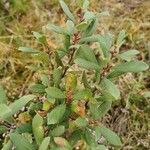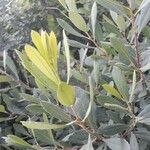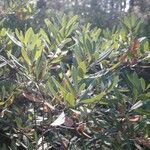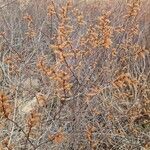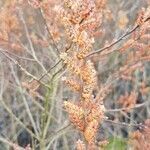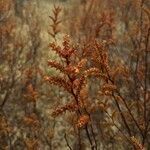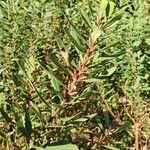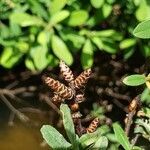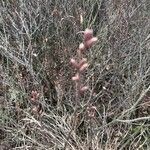Freely branched shrub to 1.5 m; lvs deciduous, oblanceolate, 3–6 cm; terminal bud wanting; distal axillary buds floral, the catkins in anthesis before the lvs expand, the staminate cylindric, 1–2 cm, with depressed-triangular bracts, the pistillate ovoid, 8–10 mm, with subrotund bracts; anthers formed in autumn; fruiting catkins 10–12 mm; bractlets 2, persistent, accrescent, becoming much-thickened, clasping and about equaling the flattened, ovate, beaked, glabrous and resinous-dotted achene, 2.5–3 mm, the tips divergent; 2n=48, 80. Swamps and shores; circumboreal, in Amer. s. to N.J., Pa., Mich., Minn., and Oreg., and (disjunct?) in N.C. (Gale palustris)
A shrub. It forms thickets, develops suckers and loses its leaves. It grows 1.5 m high and spreads 1.5 m wide. The branches are upright. The leaves are sword shaped and have teeth along the edge. They are 6 cm long. The male flowers are in yellow-brown catkins. They are 1.5 cm long. The fruit are round and yellow-brown. They are 3 mm across.
